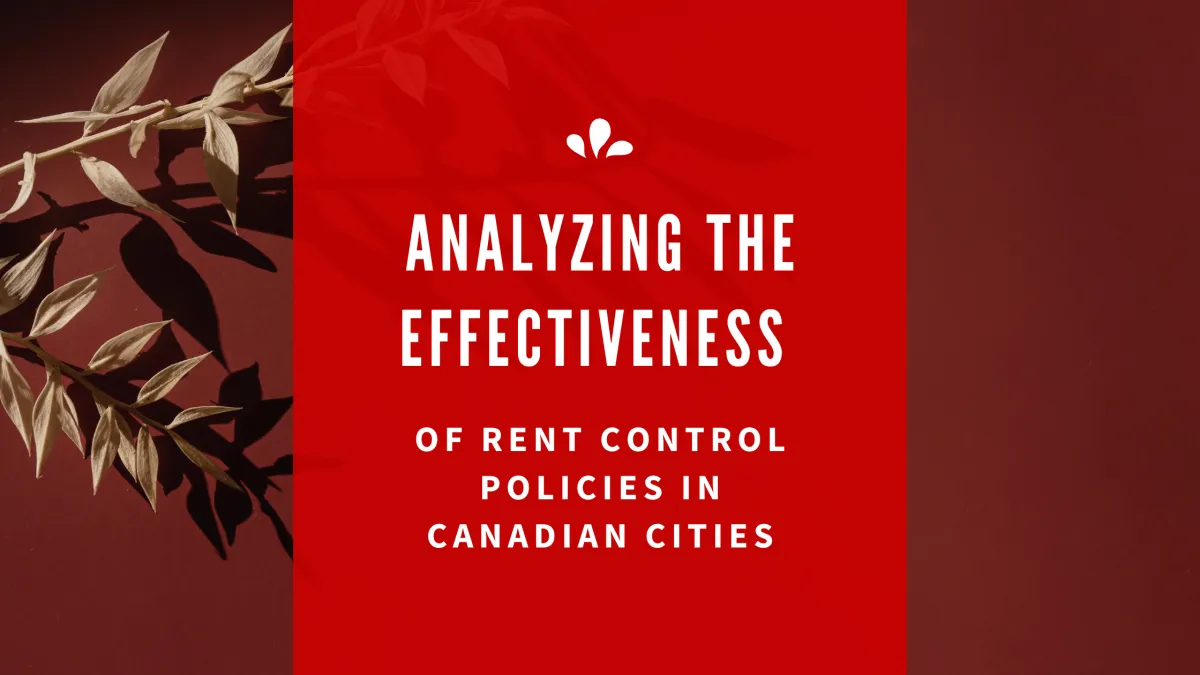BLOG
BLOG

Analyzing the Effectiveness of Rent Control Policies in Canadian Cities
Rent control policies have become an increasingly hot topic in Canada, particularly in urban centres like Toronto and Vancouver, where the cost of living has surged and housing affordability has reached crisis levels. While these regulations aim to protect tenants from arbitrary rent increases and ensure stable housing options, the debate continues over their actual effectiveness and impact on the rental market. This blog post delves into the mechanisms of rent control, its intended benefits, the criticisms levied against it, and provides a balanced view of its effectiveness across various Canadian cities.
Understanding Rent Control Policies
Rent control can take various forms, including limits on how much rent can be increased annually, tenant protections that prohibit eviction without cause, and regulations requiring landlords to offer leases for a specific duration. The fundamental goal of these policies is to create a more equitable housing market, particularly for low- and middle-income families who might otherwise be priced out of their homes. In Canada, provinces like Ontario and British Columbia have introduced rent control measures intended to mitigate the adverse effects of rising housing costs.
The Intended Benefits of Rent Control
Stability for Tenants: One of the primary aims of rent control is to provide tenants with predictable living costs. By capping annual rent increases, tenants can better plan their finances over the longer term without fear of sudden and unaffordable hikes.
Protection for Vulnerable Populations: Rent control is particularly beneficial for vulnerable demographics, such as seniors, single-parent families, or low-income workers, helping them maintain housing stability in the face of financial uncertainties.
Encouraging Tenant Retention: When rents cannot be increased significantly, tenants are more likely to stay in place for longer periods, reducing turnover costs for landlords and promoting community stability.
Criticisms of Rent Control
Despite its apparent benefits, rent control has been a contentious issue with several criticisms:
Reduced Incentives for Landlords: Critics argue that rent control can discourage property owners from maintaining or upgrading their rental properties, leading to a decline in housing quality. If income potential is capped, landlords may be disinclined to invest in renovations or maintenance.
Potential for Housing Shortages: In markets where demand far exceeds supply, rent control can exacerbate housing shortages. Landlords may choose to convert rental units into condominiums or short-term rentals to circumvent rent control regulations, further narrowing the housing stock available for long-term tenants.
Market Distortions: Some argue that rent control creates a distorted rental market where a divide forms between controlled units and the uncontrolled rental market. This distinction can lead to eroding affordability in the unconstrained sector, putting pressure on low-income families to seek housing in substandard conditions.
Case Studies in Canadian Cities
To effectively assess the impact of rent control in Canada, let's explore key examples from notable cities implementing such policies:
Toronto
In Toronto, the provincial government implemented rent control measures in 2017, aiming to protect tenants from soaring rents. Reports indicate that while some long-term tenants benefited from regulated rent increases, the overall housing market saw a plunge in new rental construction. For instance, the non-profit organization "ACORN Canada" highlighted how the rent control measures led to a 20% drop in rental housing development in the years following implementation. As such, the balance between protecting tenants and encouraging investment in rental housing remains a contentious issue.
Vancouver
Vancouver grapples with similar challenges. While the introduction of rent control is designed to safeguard tenants, the city saw a marked increase in Airbnb listings and a subsequent reduction in long-term rental availability. In 2020, the city's vacancy rate hit a historic low, and tenants struggled to find affordable housing options. Critics have pointed to rent control as a contributing factor, with landlords opting to remove units from the long-term rental market to avoid regulation constraints.
Montreal
In contrast, Montreal has maintained a relatively balanced rental market despite having rent control legislation. The city has emphasised tenant rights while still encouraging new construction projects, which has allowed it to mitigate some of the negative effects seen in Toronto and Vancouver. However, the city's challenges remain, especially in gentrified neighbourhoods where rising property values can push long-time residents out of their homes.
Conclusion
The effectiveness of rent control policies in Canadian cities largely hinges on how they're designed and implemented. While the intention behind these policies is noble—aiming to provide renters with security in an increasingly turbulent housing market—there is need for a nuanced approach. Policymakers must balance tenant protections with incentives for landlords to maintain and develop rental properties. Continuous monitoring, adjustments in legislation, and a comprehensive understanding of local market conditions are essential for achieving long-term stability in Canadian housing markets. Ultimately, the goal should be to create a fair housing system that benefits all stakeholders, fostering both affordability and growth within the rental sector. For personalized, expert advice, feel free to reach out to us at info@deniseandstuart.com.

